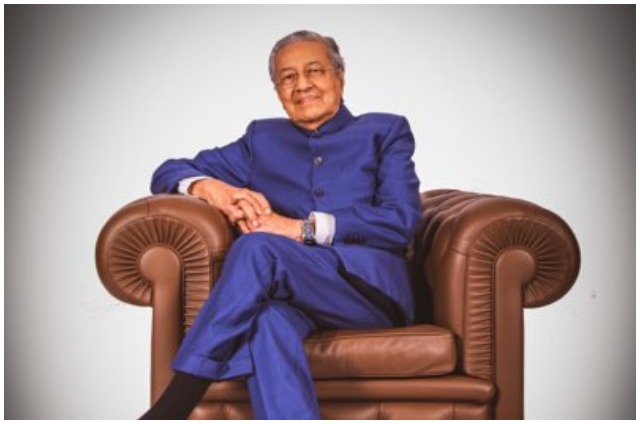

As for this writer, after years of watching Taj Mahal in documentaries and movies, and reading numerous times how the greatest Mughal monument immortalised an emperor’s love for his wife, stepping into the marble mausoleum was a momentous occasion.
Throughout the three hour journey from New Delhi to Agra, along the Yamuna Expressway, India’s modern marvel, the view of the vast plains and wheat farms dominated the landscape.
On both sides of the highway, farmers and villagers were seen plying the dirt roads running parallel to the highway on oxen carts and camels, a wonderful spectacle of both modern and old India.
THE FIRST SIGHT OF THE TAJ MAHAL
The coaster exited the highway and continued its journey to the town of
Agra.
Crossing the bridge that spanned across the vast Yamuna, the biggest tributary of the holy river Ganges, proved to be an exhilarating experience, thanks to the colourful traffic – bullocarts, cyclists, pedestrians, three-wheelers, cars and trucks – and the accompanying cacophony.
At the town of Agra, again the sight of old and new India greet visitors. As more than eight million tourists flock to Taj Mahal each year, Agra also boasts for modern hotels and fast food chains.
As soon as the coaster passed the Agra Fort, for the first time the view of Taj Mahal appeared in the distance. Inside the coaster, the euphoria was obvious with fingers pointing in that direction and the cameras clicking non-stop.
The coaster’s journey ended at the tourist centre, located about 1km away from the gates of the monument, the last stop where any motorised vehicles are allowed.
From here, our assigned guide Ramesh Deewan took us on the electric buggy to the mausoleum’s entrance.
THE TAJ MAHAL
Ramesh, born and bred in Agra, speaks English fluently with an American accent. He has also mastered French from the hundreds of foreign tourist who arrive here each day.
As the group arrived at the East Gate, there was no sign of the Taj Mahal revealing itself to the eager visitor with the perimeter wall and the impressive regal red sandstone Royal Entrance concealing the monument.
The first glimpse of Taj Mahal appears when one walks into the Royal Entrance, where the panorama of the long courtyard and fountains with the white marble mausoleum at the end comes into full view.
Like described by Ramesh, the white marble domes and minarets appear like a painting in the sky with the clear blue sky on that day serving as the backdrop. Truly a sight to behold.
Looking at the crowds on that day, numbering at thousands, and their nationalities, it dawned upon me that Taj Mahal certainly has a strong following from all corners of the world.
A LOVE IMMORTALISED


“Taj in the Mughal language means crown and Mahal means palace,” said Ramesh of the magnificent monument completed in 1653.
“A love immortalised in marble and precious stones by Shah Jahan Khurram for his consort Arjuman Banu Begum (a.k.a Mumtaz Mahal),” added Ramesh.
Taj Mahal is literally built around Mumtaz’s sarcophagus with the mausoleum’s design emphasising on symmetries and mirror images, therefore they appear the same when viewed from any angle.
Ramesh went into the many amazing architectural details of the monument including the fact it is solely made from marble without any wood or steel reinforcement.
The non-porous white marble found in Rajasthan was the choice for the builders as it does not stain and is harder than iron. But how did the artisans cut and carved these hard marble to such fine details with primitive tools?
The intricate and colourful designs on the marble walls are actually made of precious stones – carnelian (brownish-red), lapis lazuli (blue), black onyx and jasper (cyan) – embedded on the marble. Also, there were intricate floral designs carved into the marble.
Also adorning the facade walls are the Islamic calligraphy praising Allah, a statement of Shah Jahan’s devotion to Islam as well.
A DIFFERENT STORY FROM INSIDE
Walking on the marble floor, I found it hard to believe it is the same floor that Shah Jahan had walked on, probably while admiring his creation and remisnicing his beloved late wife.
While Taj Mahal looks huge from outside, its main chamber within appears rather small due to the double layer marble walls and the brilliant optical illusion outside created by its designers.
Visitors were only allowed to see the false sarcophagi of Mumtaz and Shah Jahan. The real tombs are located at the enclosed chamber below.
There are two red sandstone buildings flanking Taj Mahal, at the left is the Khan-e-Alam that now functions as a mosque and at the right hand side is Jamat-Khanna that once served as a rest house for nobility. Right behind Taj Mahal is the silted Yamuna river.
SHAH JAHAN’S ETERNAL MAGIC
Shah Jahan was the fifth great Mughal ruler after Babur, Humayun, Akbar, and Jahangir to leave behind monuments that now regarded as the glory of India and a magnet for tourists.
While most of his monuments reflected the crowning glory of a ruler, Taj Mahal is something different as it stood for the eternal love between Shah Jahan and his third wife Mumtaz Mahal.
While Shah Jahan and Mumtaz Mahal are resting in eternal peace in their magnificent mausoleum, their love story has touched the hearts of many as witnessed by this writer at the Taj Mahal’s grounds.
At Taj Mahal couples could be seen hugging each other, some especially ladies can be seen weeping and the rest stood awed by Taj Mahal’s splendour.
This writer left Taj Mahal with a heavy heart and is certain to return to learn more of the magic of Taj Mahal and the surrounding Moghul monuments.
Not everyone can build a Taj Mahal for their loved ones, even Shah Jahan almost bankrupted his kingdom in the process of fulfilling his late wife’s wishes.
Today visitors can have their own miniature Taj Mahal replicas at an affordable price, sold at the numerous souvenir shops in Agra. Also, Agra is known for its leather industry and its leather items like footwear, wallets and bags that are worth buying.
The trip to Taj Mahal is certainly enlightening as much as entertaining.
– BERNAMA








